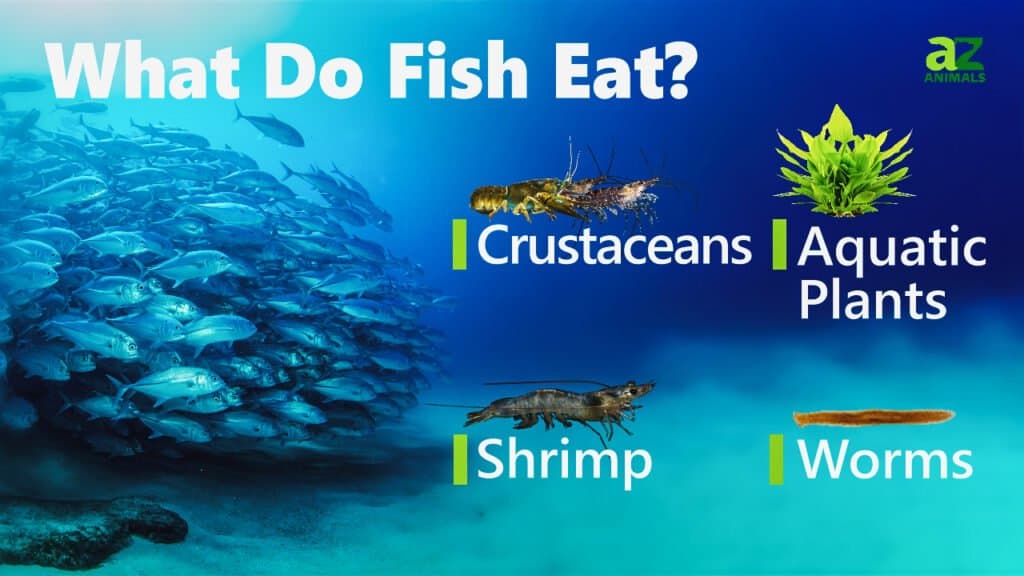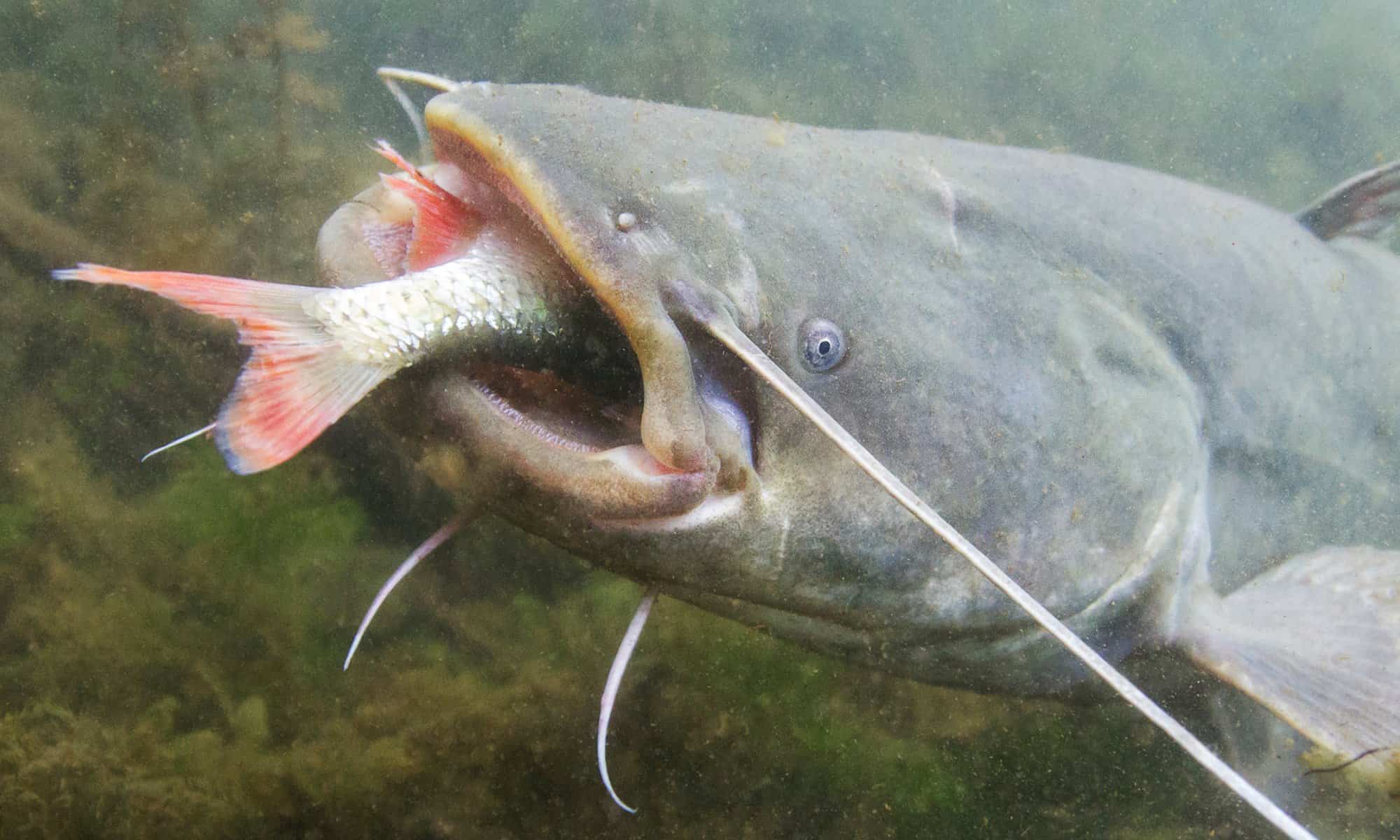Where can you find catfish in the wild?
Channel catfish have the ability to live in fresh, salt, and brackish water. They’re common occurrences in lakes, ponds, reservoirs, and moving bodies of water. However, if you don’t know what you’re looking for, you might mistake a swai fish for a catfish.
Swai fish is sometimes referred to as Vietnamese or Asian catfish because of their similar features. While these fish might have a similar appearance, they’re completely different species! Read on to learn all about the differences between swai fish vs catfish.
Comparing Swai Fish vs Catfish

| Swai Fish | Catfish | |
|---|---|---|
| Appearance | Silver, dark gray 1-4 ft in length Iridescent-colored dorsal fin Slighly glow from fin Wide mouth Small head Juveniles have black stripe down length of body | Cat like whiskers Tail shape depends on species Blue catfish have mermaid-like tail Scaleless Leathery, slippery skin Colors range between olive, brown, blue, gray Exact color depends on the species |
| Commercial connections | Staple fish in commercial production Usually substituted for cod in recipes Contain toxins if raised without strict standards | Major fish in commercial industry Best fishing seasons are March-May Muddy rivers provide the best fishing opportunities |
| Diet | Omnivore Bottom feeder | Omnivore, herbivore, or carnivore depending on species Eats throughout different water levels |
| Human impact | Not aggressive Docile fish Safe to eat when raised properly | Safe if left alone Catfish don’t attack humans unprovoked Catfish will respond to threats with poisonous stingers |
Key Differences Explained: Swai Fish vs Catfish
The key difference between swai fish vs catfish includes their appearance, diet, commercial connections, and their human impact. Catfish can grow much large than swai fish and have anatomic differences such as how their whiskers function.
Swai fish can grow as long as 4 ft and have a silver – dark gray color. Catfish are a more diverse fish group that can have a variety of colors. Commercially, swai fish raise some controversies because of improper fish farm methods. However, catfish are a beloved meal, especially in the south.
Keep reading to dive deeper into the key differences between swai fish vs catfish.
Swai Fish vs Catfish: Appearance and Characteristics

©Aleron Val/Shutterstock.com
Swai fish is a fast-growing riverine fish that belongs to the Pangasiidae family. They’re a popular white fish usually substituted for haddock and cod in certain recipes.
Swai fish characteristics include a long silvery body, wide mouth, and small head. They also have distinguishable catfish barbells.
Catfish earn their name because of their cat-like whiskers. There are more than 3,000 species of catfish that include the channel catfish, ghost catfish, blue catfish, and bullheads. The exact species of catfish is going to play a large role in how their tail looks.
For instance, the blue catfish tail has an almost mermaid-like appearance while the bullhead tail is blunter. Amazingly, unlike other fish, catfish don’t have any scales! They have leathery, slimy, slippery skin instead.
They also have bony plates called scutes. Scientists believe the lack of scales helps the catfish breathe better. Another interesting feature is the catfish’s pectoral fins. The fins can create vibrations that produce underwater sounds. It’s a great way for the catfish to signal nearby danger.
Swai Fish vs Catfish: Commercial Connections
Swai fish is one of the most important fish for commercial production. It leads the way with carp, tilapia, and salmon. Most of the swai fish farms are located in Vietnam. Other countries with large swai fish farms include Nepal, India, Bangladesh, Indonesia, and Thailand. In some areas of the world, the farming of swai fish is raising social and environmental concerns.
However, as long as the fish farmers are following the right guidelines, they’ll be able to produce healthy fish. For instance, for a swai fish farm to be ASC certified they have to abide by strict aquaculture standards.
Catfish also make up a large part of the commercial fishing industry. Some of the best times to fish for catfish are March, April, and early May. The best states for catfishing include Alabama, Arkansas, and Illinois.
Surprisingly, Illinois doesn’t get a lot of credit for being a prime catfishing spot. However, from the Mississippi River in the West to the Ohio River in the east, there are plenty of catfish opportunities. Since the Mississippi and Ohio Rivers don’t get the pressure like deep South rivers do, it’s easier to find trophy-sized blue catfish, channel catfish, and flathead. Along with the Mississippi, other good rivers for finding trophy-sized fish include the Illinois, Fox and Rock, and the Kaskaskia River.
Channel catfish are becoming increasingly popular for researchers too. Scientists are discovering ways to clone channel catfish cells for special breakthroughs.
Swai Fish vs Catfish: Diet

Swai fish are omnivores; they eat small marine critters and bits of plants. Some of their favorite food includes small fish, brine shrimps, and bloodworms. In captivity, you can feed them crickets too. Since they’re bottom feeders, sway fish prefer large bodies of water with plenty of depth.
Catfish make up a diverse group of fish, which means they have a variety of feeding habits. Some catfish are herbivorous, eating a diet consisting of aquatic plants. Other catfish grow up to be scavengers eating whatever they can find. Some catfish are so large that they can swallow another fish whole!
Swai Fish vs Catfish: Human Impact
You don’t have to worry if you see a swai fish while you’re swimming. They’re a rather peaceful fish. The only potential threat they present to humans is through consumption when they’re not raised properly.
If fish farmers raise swai fish under the wrong conditions, the fish can be full of toxins. In certain situations, swai fish caught in the wild are also toxic. The good news is that most of the swai fish sold to the market places are regulated products of aquaculture. As long as you’re buying from a quality distributor, you’ll be able to enjoy a filet that’s full of protein and omega-3 fatty acids.
Catfish don’t pose any threat to humans if left alone. There are catfish species that have stings embedded in their fins. The sharp stings can pierce through the skin of anyone who threatens them. But catfish don’t seek out human victims.
There are a lot of myths and false stories on the internet about killer catfish. However, the stories are usually a misunderstanding.
If you see a catfish while you’re swimming, don’t approach it, and you’ll be fine. Catfish are also safe to eat, as long as they’re properly cooked.
Baked and broiled catfish are some of the tastiest recipes to try. If you’re in the mood to try something new, you should also give pan-seared tilapia a try.
Thank you for reading! Have some feedback for us? Contact the AZ Animals editorial team.








